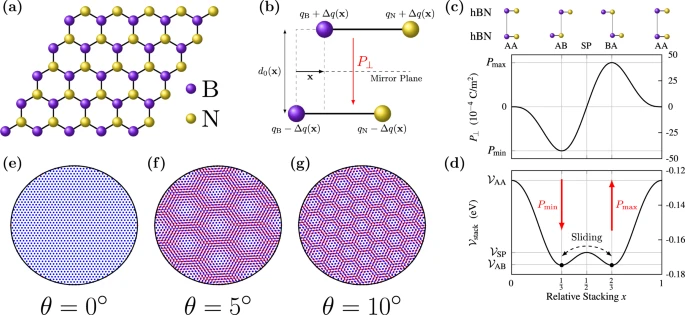Science Daily April 11, 2023
Out-of-plane polar domain structures have recently been discovered in strained and twisted bilayers of inversion symmetry broken systems such as hexagonal boron nitride. An international team of researchers (Belgium, UK, USA – Harvard University) has shown that this symmetry breaking also gives rise to an in-plane component of polarization, and the form of the total polarization is determined purely from symmetry considerations. The in-plane component of the polarization makes the polar domains in strained and twisted bilayers topologically non-trivial, forming a network of merons and antimerons (half-skyrmions and half-antiskyrmions). For twisted systems, the merons are of Bloch type whereas for strained systems they are of Néel type. The researchers proposed that the polar domains in strained or twisted bilayers may serve as a platform for exploring topological physics in layered materials and discussed how control over topological phases and phase transitions may be achieved in such systems… read more. Open Access TECHNICAL ARTICLE

Ferroelectricity in twisted bilayers. Credit: Nature Communications volume 14, Article number: 1629 (2023)